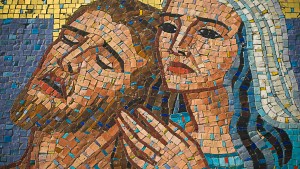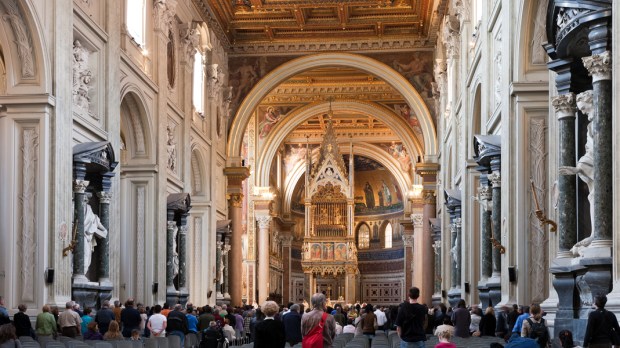The beauty of walking through Rome is that pretty much anywhere you walk in the city center, you are literally walking in the footsteps of ancient Romans and early Christians. Certain piazzas have served as gathering points since time immemorial.
One ancient Christian tradition, known as station liturgies, has been practiced as far back as the 5th century, if not even longer.
This tradition holds that during the 40 days of Lent, Catholics visit a different church each day for Mass. There is a schedule of which “station church” to visit on which day. Today, a Vatican academy makes sure that the Italian liturgies go smoothly at each church, while the Pontifical North American College (the US seminary in Rome) organizes liturgies in English at each of the station churches.
Monsignor Paolo Iacobone of the Pontifical Academy Cultorum Martyrum told the Vatican newspaper L’Osservatore Romano that originally the station liturgies took place at parishes and shrines that housed the relics of different martyrs, usually on that martyr’s feast day. The Christian community would gather and keep vigil, or pray for extended periods of time, while also fasting.
Eventually the station churches and days were expanded to include not only the feast days of certain saints and martyrs important to the early Christians, but other special days as well.
In the early days of the stational liturgies, the pope would gather with the faithful at a church close to the church of the day. He would say opening prayers and then lead a procession through the streets to the station church. Once the procession arrived at the station church the pope would preside over a prayer vigil.
The fasting and prayer element of the stational liturgies fit very well with the season of Lent; a time of prayer, spiritual purification, and some fasting. Over time, enough station churches were added to cover the full 40 days of Lent and the prayer vigil was replaced with the Mass.
This practice of praying at station churches continued until the papacy was moved to Avignon in 1305. After the papacy returned to Rome in 1377 the stational liturgies were not resumed, at least not on a very wide scale. Some church leaders like Charles Borromeo and St. Pius V did take up the practice as much as they could.

Read more:
A leader of the real Reformation, Charles Borromeo saw a need and filled it
In 1870 those who were still “doing the stations” in Rome were forced to stop when public religious processions were outlawed.
Uprisings against long established monarchies and ruling powers were sweeping Europe. As a precaution Rome suppressed public gatherings on the street. But the uprisings arrived on the peninsula and the various kingdoms, duchies, and principalities that ruled different parts of the boot were united into the nation state known today as Italy.
Finally in the 1930s Monsignor Carlo Respighi, the pope’s master of ceremonies, started encouraging the use of the station churches. Slowly but surely he managed to relaunch the ancient practice using almost the same churches and schedule that were used at the time of the Council of Trent.
To help promote the revival of the station liturgies Pope Pius XI and Pope Pius XII decreed that faithful who visited the station churches during Lent and Easter would receive indulgences. Pope John XXIII decided to take part in the stational liturgy for Ash Wednesday, something all of his successors have also done.

Read more:
How to pray the Stations of the Cross as if you were there
Today “doing the stations” is something Catholics in Rome look forward to every Lent — especially the expatriate North Americans living in the Eternal City. The seminarians studying at the Pontifical North American College take part in the tradition of the stational liturgies and invite visitors and expats to join them every morning during Lent at 7:00 am at the station church of the day.
Outside Rome, many dioceses around the world have their own smaller version of the stational liturgies: indulgences are received if you visit seven different churches on specific days in Lent, or other special feast days.
Taking part in the stational liturgies today is a way to feed the soul by reconnecting with the early Christians who were the first models of what it means to follow Jesus.
Join in from afar here.

Read more:
Pilgrimage to history: Family traces paths of forebears in the Church

